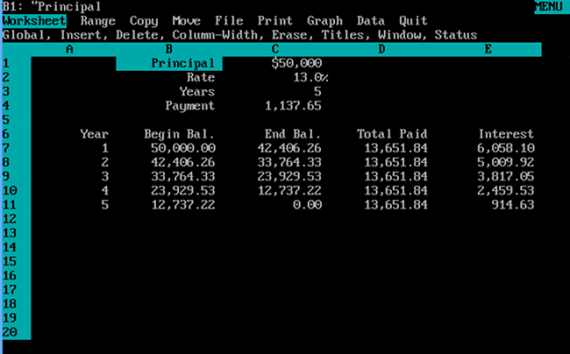

VisiCalc was launched in 1979 on the Apple II and immediately became a best-seller. IBM purchased Lotus in 1995, and continued to sell Lotus offerings, only officially ending sales in 2013.

Lotus was surpassed by Microsoft in the early 1990s, and never recovered. None of the major spreadsheet developers had seriously considered the graphical user interface (GUI) to supplement their DOS offerings, and so they responded slowly to Microsoft's own GUI-based products Excel and Word.

With the acceptance of Windows 3.0, the market for desktop software grew even more. It quickly overtook VisiCalc, as well as Multiplan and SuperCalc, the two VisiCalc competitors.ġ-2-3 was the spreadsheet standard throughout the 1980s and into the 1990s, part of an unofficial set of three stand-alone office automation products that included dBase and WordPerfect, to build a complete business platform. Lotus's solution was marketed as a three-in-one integrated solution: it handled spreadsheet calculations, database functionality, and graphical charts, hence the name "1-2-3", though how much database capability the product actually had was debatable, given the sparse memory left over after launching 1-2-3. With IBM's entry into the market, VisiCalc was slow to respond, and when they did, they launched what was essentially a straight port of their existing system despite the greatly expanded hardware capabilities. The first spreadsheet, VisiCalc, had helped launch the Apple II as one of the earliest personal computers in business use. It was the first killer application of the IBM PC, was hugely popular in the 1980s, and significantly contributed to the success of IBM PC-compatibles. Lotus 1-2-3 is a discontinued spreadsheet program from Lotus Software (later part of IBM). DOS, Windows, OS/2, classic Mac OS, MVS, VM/CMS, OpenVMS, Unix


 0 kommentar(er)
0 kommentar(er)
